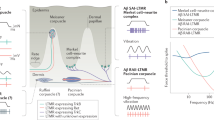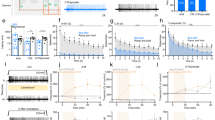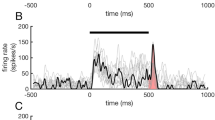Abstract
AMONG the sensory nerve endings of mechanoreceptors there are two principal ways in which excitation can occur. In primary endings like the Pacinian corpuscle, the nerve membrane is directly excited by mechanical deformation conveyed by the surrounding non-nervous cells. In secondary endings like those in the ear, modified non-nervous cells are excited by the stimulus. They then excite the sensory nerve membrane either by current flow from cell to cell, or by extracellular field potentials, or finally by some secretory action which is often by way of a chemical synapse but could be of a more diffuse nature1–3. For fine, unmyelinated sensory nerve fibres, however, the dendrites of which branch in tissues to form ‘free nerve endings’, it is not clear whether excitation is direct or indirect, or whether the endings are primary or secondary. Here I describe a preparation in which the activity of unmyelinated sensory neurones can be recorded simply and where the question is asked: are ‘free nerve endings’ excited directly by mechanical stimuli or is their excitation dependent on an electrical depolarisation of the cells that they innervate?
This is a preview of subscription content, access via your institution
Access options
Subscribe to this journal
Receive 51 print issues and online access
$199.00 per year
only $3.90 per issue
Buy this article
- Purchase on Springer Link
- Instant access to full article PDF
Prices may be subject to local taxes which are calculated during checkout
Similar content being viewed by others
References
Davis, H., Physiol. Rev., 41, 391–416 (1961).
Fuortes, M. G. F., Handbook of Sensory Physiology, 1 (edit. by Loewenstein, W. R.), 243–268 (Springer, New York, 1971).
Horch, K. W., Whitehorn, D., and Burgess, P. R., J. Neurophysiol., 37, 267–282 (1974).
Roberts, A., and Stirling, C. A., Z. vergl. Physiol., 71, 295–310 (1971).
Nieuwkoop, P. D., and Faber, J., Normal Tables of Xenopus laevis (Daudin), (North-Holland, Amsterdam, 1956).
Author information
Authors and Affiliations
Rights and permissions
About this article
Cite this article
ROBERTS, A. Mechanisms for the excitation of ‘free nerve endings’. Nature 253, 737–738 (1975). https://doi.org/10.1038/253737a0
Received:
Revised:
Published:
Issue Date:
DOI: https://doi.org/10.1038/253737a0
This article is cited by
-
The function and role of two types of mechanoreceptive ?free? nerve endings in the head skin of amphibian embryos
Journal of Comparative Physiology ? A (1980)
Comments
By submitting a comment you agree to abide by our Terms and Community Guidelines. If you find something abusive or that does not comply with our terms or guidelines please flag it as inappropriate.



